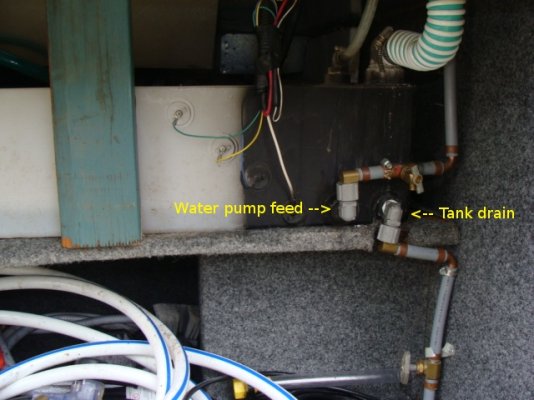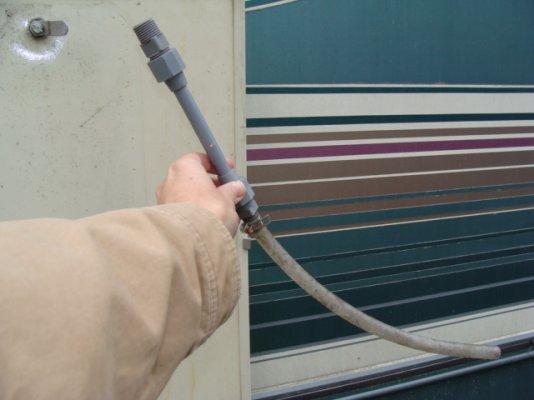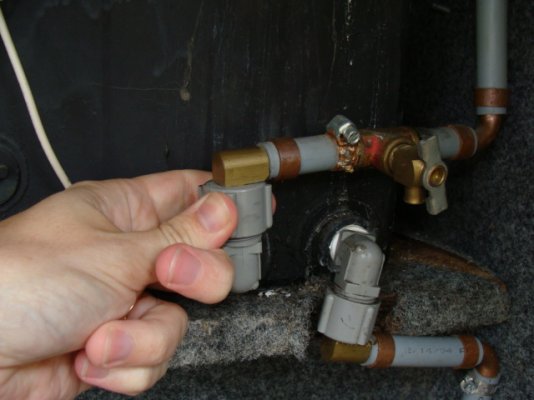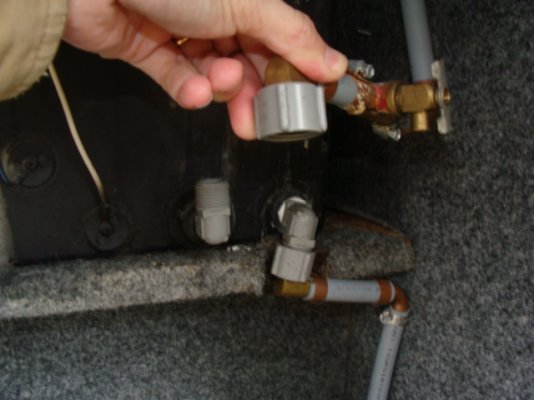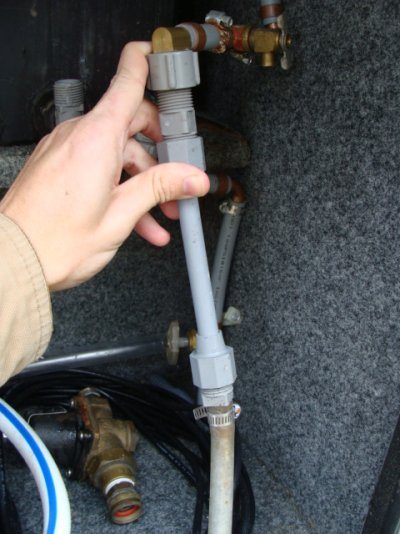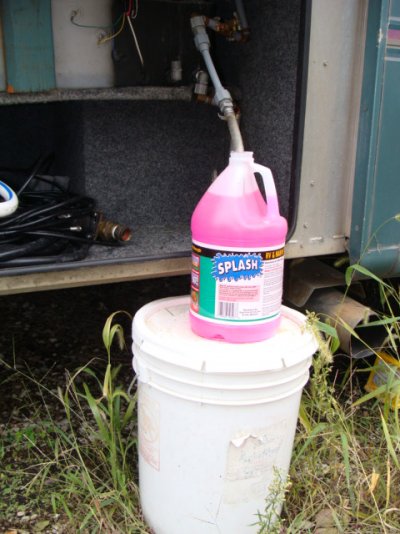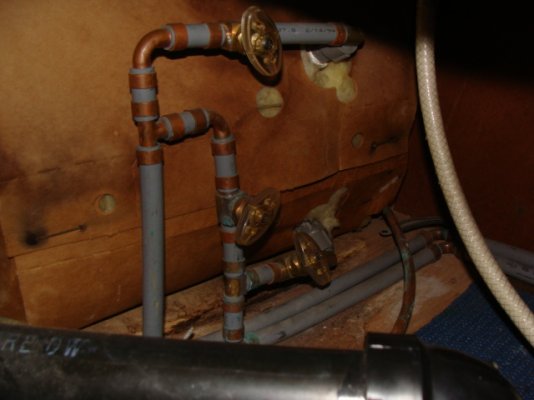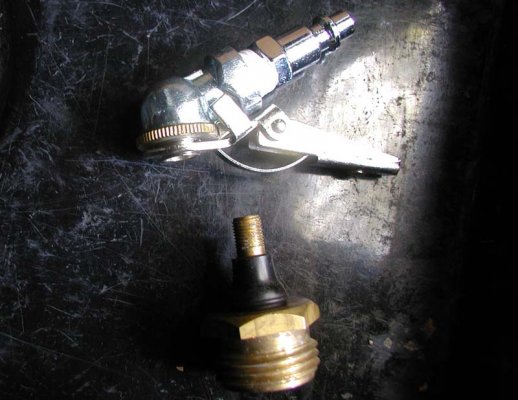scottydl said:
Give me a bit and I'll take a photo of what we have, and post it here.
Okay here it is... photos below correspond with these descriptions:
(1) this is a corner of my fresh water tank. On the bottom right corner there are two water outlets, one is the tank drain (works by gravity when valve is opened) and the other feeds the RV water supply by getting sucked out by the water pump.
(2) this is the device I found in a compartment (left by the previous owner), and eventually figured out it was an extension used for winterizing with RV antifreeze.

It's a small piece of plastic pipe with double threaded nuts on each end. The "bottom" end has a length of flexible plastic tubing attached with a hose clamp.
(3) AFTER draining the tank as much as possible, I unscrew the water pump feed pipe.
(4) Once unscrewed, I pull it away from the tank... this is possible because it hangs down to its regular place on a flexible piece of hose/pipe.
(5) I screw on the homemade extension to the water pump feed pipe.
(6) The plastic tubing on the extension goes IN to a jug of RV antifreeze, raised up to the "right" height (by a 5-gallon bucket in my case). I leave this set up, turn on my water pump, and go around the RV turning on each water faucet/toilet/shower (one at a time) until pure pink comes out. Don't forget your outside shower and drinking water spigot if you have one. I only had to swap jugs one time.
(7) For bonus, this is the 3-valve system on my hot water tank under the kitchen sink. To bypass the HW tank on mine, I have to close the bottom valve (prevents water from going in) and open the middle valve (allows the hot water supply to get through to the hot water faucets without going through the tank first).
I drained all my RV's water last night, and winterized with the RV antifreeze today. I really only used about 1.5 gallons, and used the remaining half gallon to pour some more down each drain. All seemed to go fine, once I figured out those HW tank valves again. Since I only mess with them once per year, it always takes a little refresher to remember what the heck they're all used for.

Let me know if any of the photos below don't line up with my descriptions above. Hope this helps!

